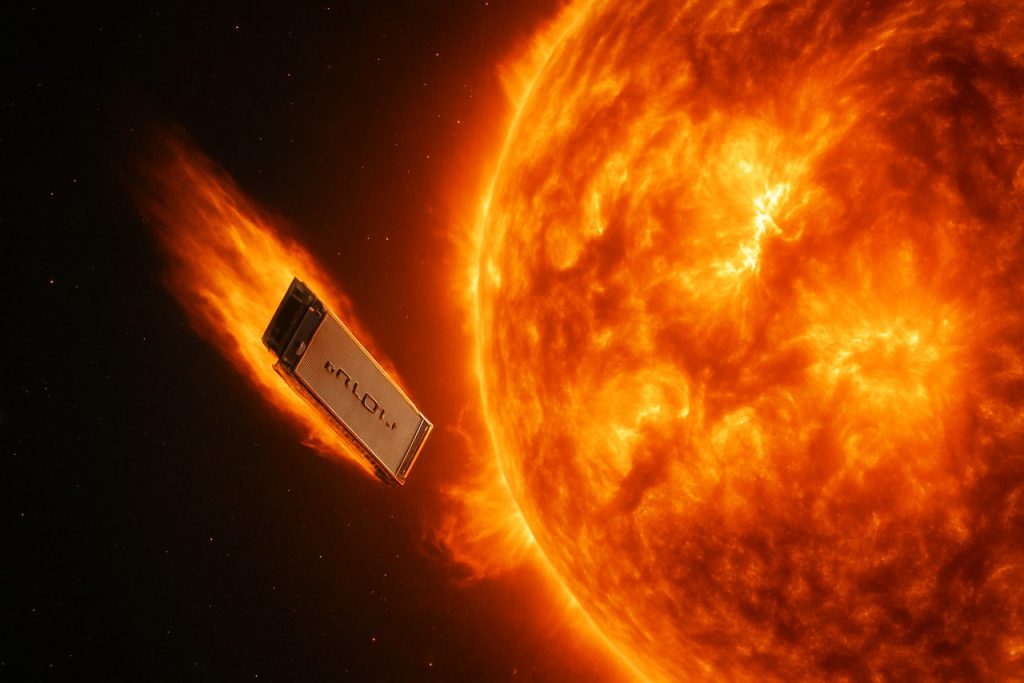
Solar Chaos Torches Starlink: Why Hundreds of Satellites Are Falling From the Sky in 2025
SpaceX’s Starlink network has lost over 500 satellites during fierce solar storms, leaving experts and skywatchers stunned.
- 523 Starlink satellites lost since 2020 due to solar storms
- 120+ satellites burned up in January 2025 alone
- Solar Cycle 25 at maximum intensity, increasing space weather risks
- 42 satellites destroyed instantly during 2024’s biggest solar storm
SpaceX’s Starlink project has taken the world by storm—literally and figuratively. While Elon Musk’s satellite network promises to transform global internet coverage, it now faces an extraordinary adversary: the Sun itself. As Solar Cycle 25 slams Earth with powerful geomagnetic storms, Starlink satellites are dropping from orbit at unprecedented rates.
Raging solar activity is generating vivid night-time fireballs as more than 500 satellites burn up in Earth’s atmosphere. But this spectacle comes with hidden costs, from data disruption to mounting pollution concerns. Here’s why the world’s largest satellite constellation is under attack from forces beyond human control.
Q&A: What’s Fueling This Starlink Satellite Disaster?
What is Solar Cycle 25 and why is it so destructive for satellites?
Solar Cycle 25 marks a period of especially intense solar storms and eruptions. Every 11 years, the Sun’s magnetic activity peaks, unleashing a barrage of solar flares and coronal mass ejections. In 2025, Earth is being bombarded by one of the most active solar maxima in decades, triggering powerful geomagnetic storms and dramatically increasing atmospheric drag on satellites in low Earth orbit. These storms are tracked and studied by scientists at leading institutions like NASA and NOAA.
How exactly are Starlink satellites being lost?
The solar storms heat and churn the Earth’s upper atmosphere, causing it to expand and thicken. As a result, Starlink satellites—designed for low Earth orbit to deliver speedy internet—experience increased drag. Many begin to lose altitude rapidly, re-entering the atmosphere and burning up in brilliant fireballs. The biggest hit came during a massive solar storm in 2024 when 42 newly launched satellites failed within days.
How-To: Track Satellite Re-Entries and Skyfire Events
Skywatchers can spot these events by staying alert for news of upcoming geomagnetic storms. The debris from burning satellites can create spectacular displays, with metallic vapors streaking through the sky. Sites like Space.com, ESA, and NASA offer up-to-date alerts on visible fireballs and aurora.
For those concerned about environmental effects, the growing number of satellite re-entries is also under serious review. Scientists warn that the metal vapors released could have unknown impacts on atmospheric chemistry.
Why Should You Care About Satellite Losses?
For millions relying on global internet from Starlink, network outages and delays in further launches could follow. Space weather experts point out that other low-orbit satellites, GPS services, and even ground technologies—from power grids to aviation—are at risk during intense solar cycles.
SpaceX is not alone: other companies and agencies with plans for low Earth orbit satellites must now rethink their designs and mitigation strategies in the face of an increasingly volatile Sun.
Don’t miss out—stay prepared as solar storms threaten the future of global connectivity.
Actionable Checklist for Skywatchers and Tech Users
- Monitor NASA and Space.com for space weather warnings
- Expect potential Starlink connectivity disruptions during solar storms
- Watch for bright satellite fireballs during peak geomagnetic activity
- Support research into sustainable satellite design and space pollution minimization
Stay informed—the Sun’s stormy moods could shape your digital world in 2025 and beyond.



